The most effective solar equipment brokers are real networkers.
Over the years of hosting the BrokerBin and EnergyBin platforms, we’ve witnessed thousands of brokers from around the world grow their businesses through the power of networking.
But they’re not in it solely for their own advantage. The most effective solar equipment brokers take an approach that lifts contacts up to realize others’ success first. In this spirit of giving, they’ve formed life-long relationships that have been vital to achieving business goals.
In this article, we’ll share advice for networking with the goal of developing partnerships for life. Whether you’re a broker, supplier or contractor, this type of networking will position you in the solar industry as a person worth knowing and doing business with.
Why network as a giver?
When you hear the word, ‘networking’, you may think, “What’s in it for me?” That’s a fair question since we all lead busy lives and have limited time at our disposal. Most people think of networking as necessary to identify new leads, generate referrals, promote your brand, and gain advice.
Rather than approaching networking with the idea of getting something out of it, go in asking what you can give.
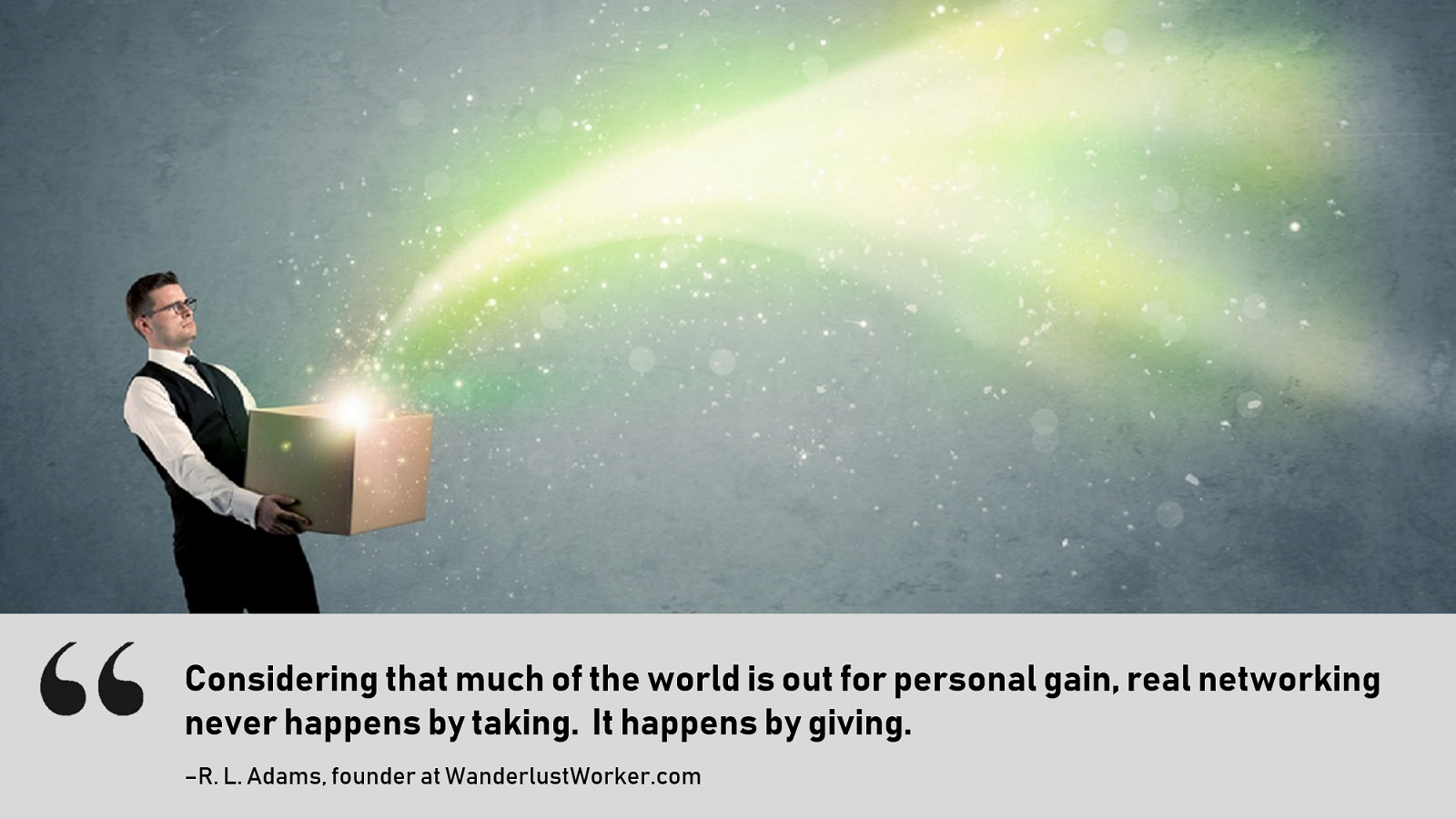
Networking is all about building rapport. Merriam-Webster defines rapport as “a friendly, harmonious relationship characterized by agreement, mutual understanding, or empathy that makes communication possible or easy.”
It is a vehicle to earn trust from those you desire to know and do business with, which is especially important when you are buying and selling solar equipment online. Build rapport by offering to help others achieve their goals and challenges. Show sincere concern for seeing them succeed.
Trust leads to life-long friendships. Rob Van Demmeltraadt, sales manager at EnergyBin, has proven that when you give first, you gain. Rob considers himself a master connector as he introduces brokers around the world to one another day-in and day-out.
“By taking a ‘giving’ approach and striving for mutual beneficial relationships, I’ve built a network of friends who I trust and who trust me. I consider everyone in my network to be my tribe.”
Because the solar industry is entrenched in relationships – oftentimes, business gets done by who you know – networking is crucial to making headways. Those PV professionals who stand out as someone worth knowing are the people who are willing to help advance ideas forward by bringing the right people together.
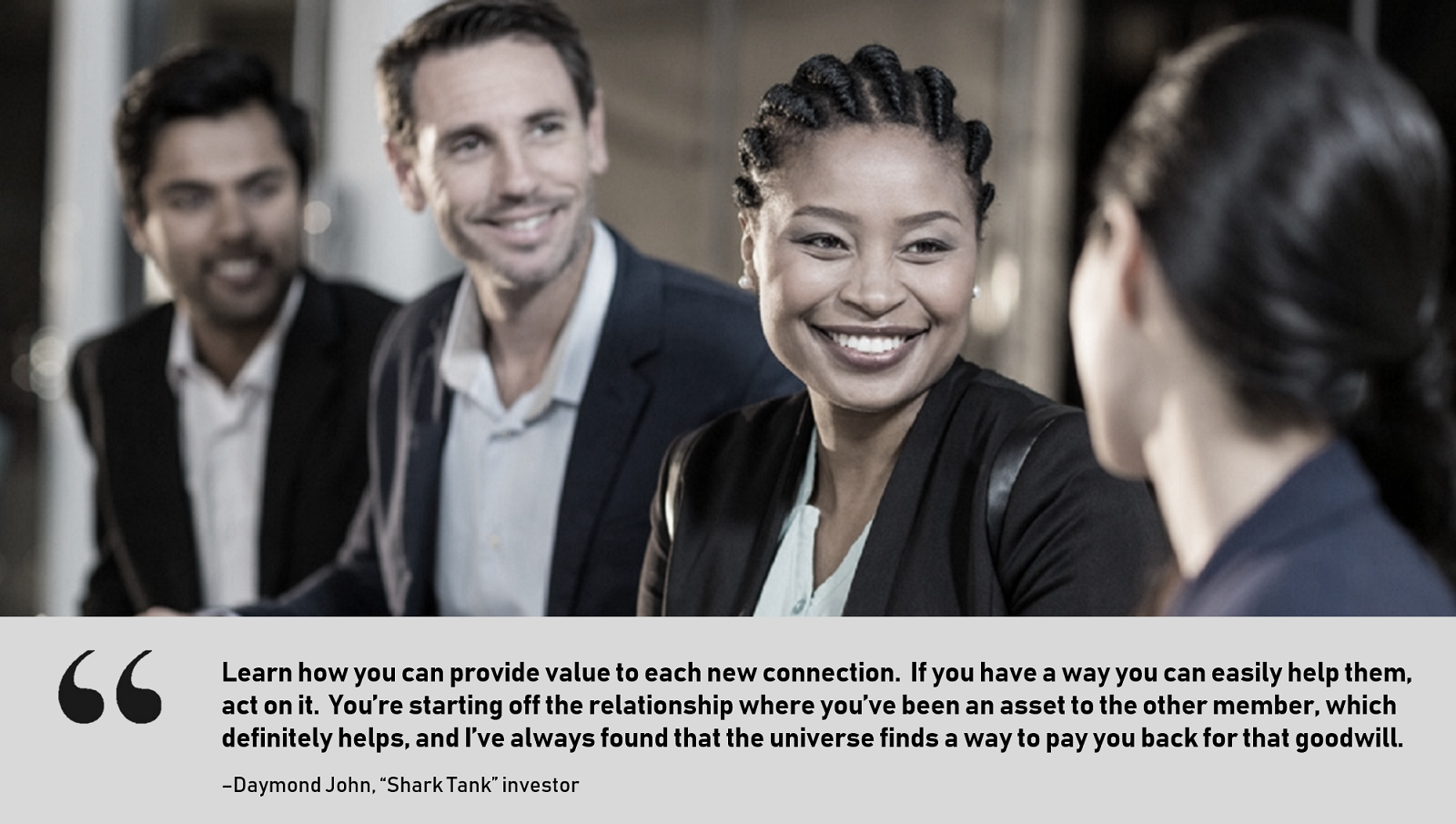
Benefits to networking online
In the solar industry, the ideal networking approach is via in-person communications. Face-to-face marketing creates the opportunity for buyers and sellers to see each other in person, to shake hands and have a live, real-time conversation. Such encounters build rapport, promote a personal connection and strengthen business relationships.
Although ideal, face-to-face meetings are not always possible. But much of the personal experience can take place online. Even if you are successfully networking in person, you may find value by taking your networking skills online as well.
Tapping into online platforms like social media and business communities connect you to new contacts around the world. Now you can broaden your network beyond your local geography. Plus, with the flexibility of online networking, you can work on making connections any time of the day.
Networking online can also complement face-to-face meetings. Use platforms to conduct prospect research. Send a message to request a meeting. Reach out with a follow-up message after the meeting.
As a general practice, find a way to follow-up online with every person you meet at trade shows and conferences. For example, connect with them on LinkedIn or in an online business community.
Using online networking in a genuine way shows that you really are interested in having a meaningful relationship with your contacts.
Where to network online
Solar professionals connect online in a variety of ways. Some of the most popular venues are social media, online business communities and trade associations.
Social Media
Social media, especially LinkedIn, is useful for connecting with peers in the industry. But you should proceed with tact. Ori Manor, the founder of Unomy, warns of adding contacts without meaning.
“One of the biggest mistakes professionals make is reaching out sans social context. Popping out of nowhere can immediately trigger a negative response. Instead, find and include personal context that elevates trust and gets you the right kind of attention.”
Take the time to learn about your contact and write a meaningful message that includes your request to connect. Perhaps you heard them speak at a conference or read an article they published. Maybe you studied at the same university or know a mutual contact.
Online Business Communities
Another way to connect online is via business communities. There are a number of groups in the solar industry. They vary in purpose and membership dues similar to how trade associations and chambers of commerce vary. Some offer additional resources and events beyond the networking benefit. They can be very specific or broad in membership.
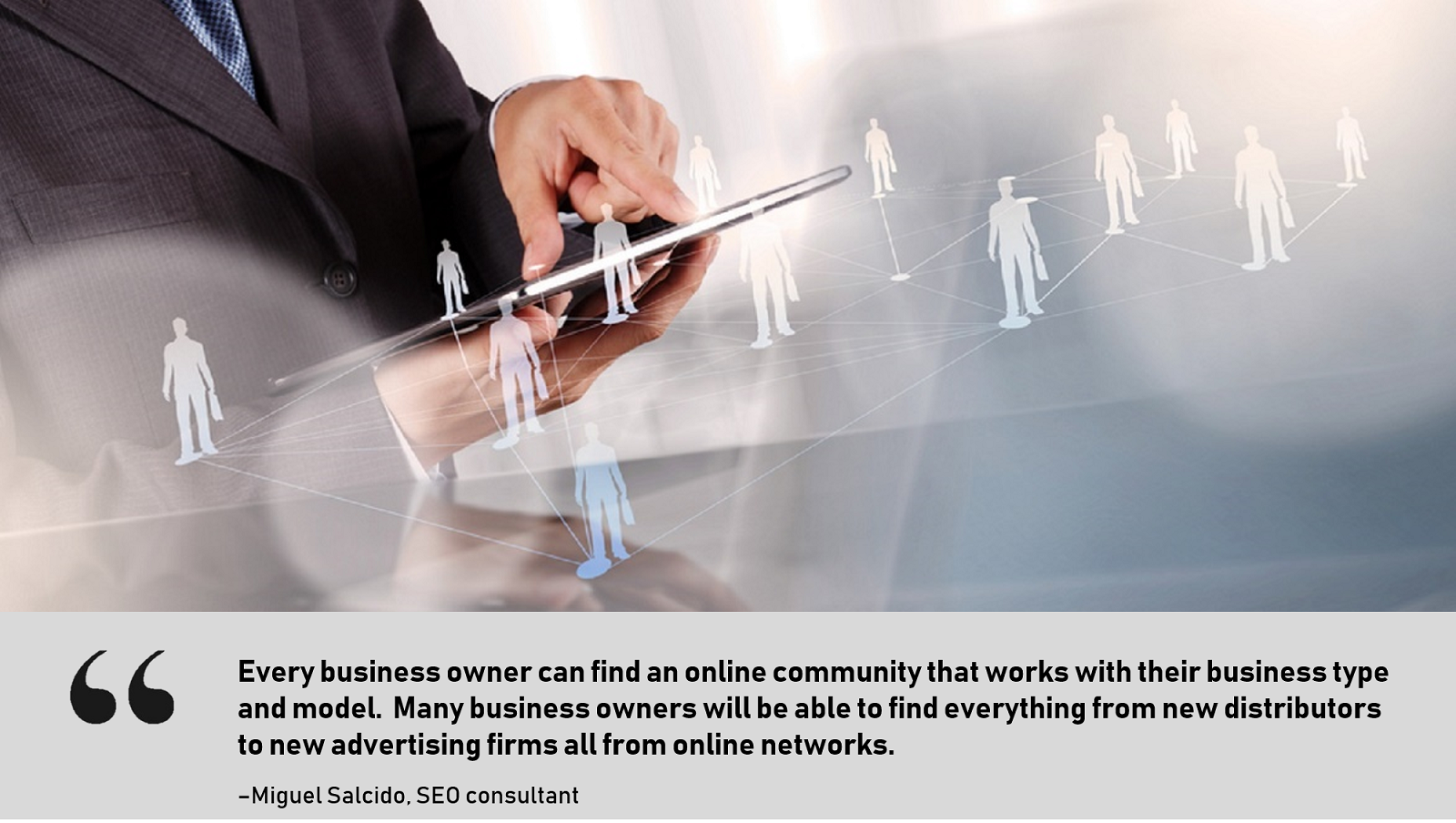
For example, EnergyBin is a business community for solar companies who directly deal in wholesale solar equipment. Buyers and sellers come together on the platform to network with each other for the purpose of trading equipment. Additionally, they have exclusive access to market intelligence and resources to enhance their businesses.
As Rob Van Demmeltraadt points out, the community takes on a spirit of giving, where more collaboration than competition takes place.
“I find the best way to network with other members on EnergyBin is to discover their value points and then work on building a value-added relationship.”
Trade Associations
Additionally, trade associations offer opportunities for solar professionals to network online. Many have incorporated regular online meetings to make it convenient for members to join from anywhere. More and more are adding online events to their events portfolios. They also provide useful resources that may come in handy when you’re networking with non-member contacts.
We’ve seen some people join business communities and trade associations solely to scrape membership lists for contact information. If you do this, you’re cutting yourself short of the opportunity to form meaningful relationships. Daymond John, one of the investors on the TV show, “Shark Tank” emphasizes the importance of engaging with others.
“Stand out by having a real conversation with people rather than seeing how many business cards you can collect. Quality over quantity.”
It really is all about quality conversation to stand out as a person others want to include in their networks.
Reach out with a meaningful introduction
How do we cultivate quality conversation with the goal of leaving a positive impression on others?
Start by reaching out with a meaningful introduction. Whatever you say in your introduction, don’t sell. Effective networkers agree that the introduction message is not the time to sell. But it is the time to evoke their interest. Put some creative thought into how you represent yourself.
Jon Levy, the founder and host of Influencers, gives the following creative description about what he does.
“When people ask me what I do, I try to be a little elusive just to create some interest. So I tell people I spend most of my time trying to convince people to cook me dinner, which is true. A lot of my time is really spent around logistics, phone calls and emails… But the benefit of [my introduction] is that it sounds so different and then it’s easier to connect.”
To start, Jon suggests a brief email to grab their attention:
Hi [Name],
This is what I do… [creative attention grabber].
I think what you’re doing is fascinating, and I’d like to sit down with you and talk about what you’re doing.
Be mindful when using others’ email templates. You know the language that resonates best with solar company executives.
As Jason Bay, co-founder of Blissful Prospecting points out, “Email templates are usually never customized to the industry or persona. The messaging used for VPs of Sales at SaaS companies doesn’t work the same way for VPs of IT at Professional Services firms. Instead of looking for the next cold email template to copy/paste, make your own email templates. Build your own talk tracks.”
Jason produced the REPLY Method for email composition. The goal of this method, as the name implies, is to get a reply from the person you are reaching out to.
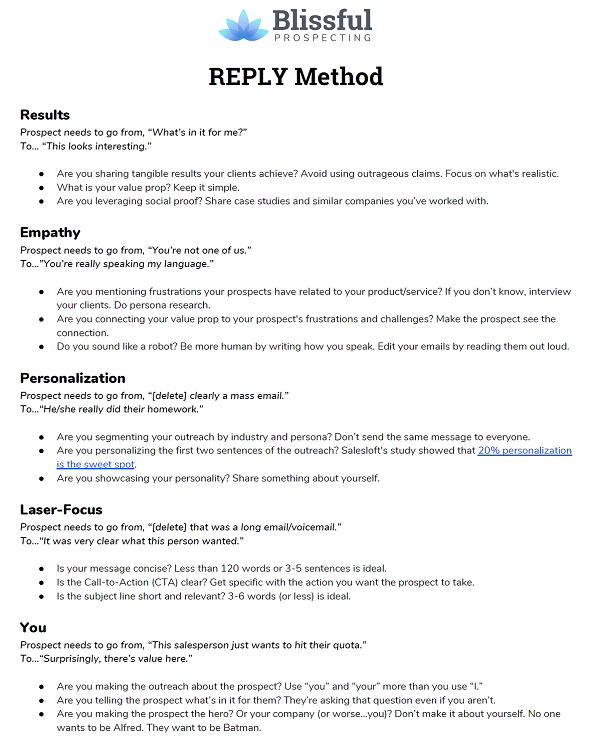
This method would serve any solar equipment dealer well in your networking efforts. Create interest from the start by focusing on the prospect (“You”). Incorporate your research about the contact (“Personalization”). Share a value proposition (“Results”). Be human and let your personality shine through (“Empathy”). Keep the message short, and make it clear what you want them to do (“Laser-Focus”).
Putting thought into your introduction will lead to more meetings granted by the contacts you are reaching out to.
Moving beyond the intro
Once you send an introduction message, expect to follow up with a phone call 1-2 business days later. Networking takes effort. It doesn’t happen when you send one email and then give up. The reality is we live in a world where less than 24% of sales emails are opened, which is why you need to prepare to reach out in other ways as well.

Jon Levy suggests calling an executive before 8 a.m. because “it’s likely they’ll be in the office but their assistant won’t be. It’s best to give them a call before their day gets too hectic.”
Chances are that most people will respond positively to your genuine desire to connect with them. If the contact blows you off, don’t take it personally. Just move on.
For those who agree to a meeting, whether it’s a phone call, video chat or in-person visit, put in the effort to prepare well. You’ll want to focus on making a memorable impression and leaving the other person feeling the meeting was worth their time.
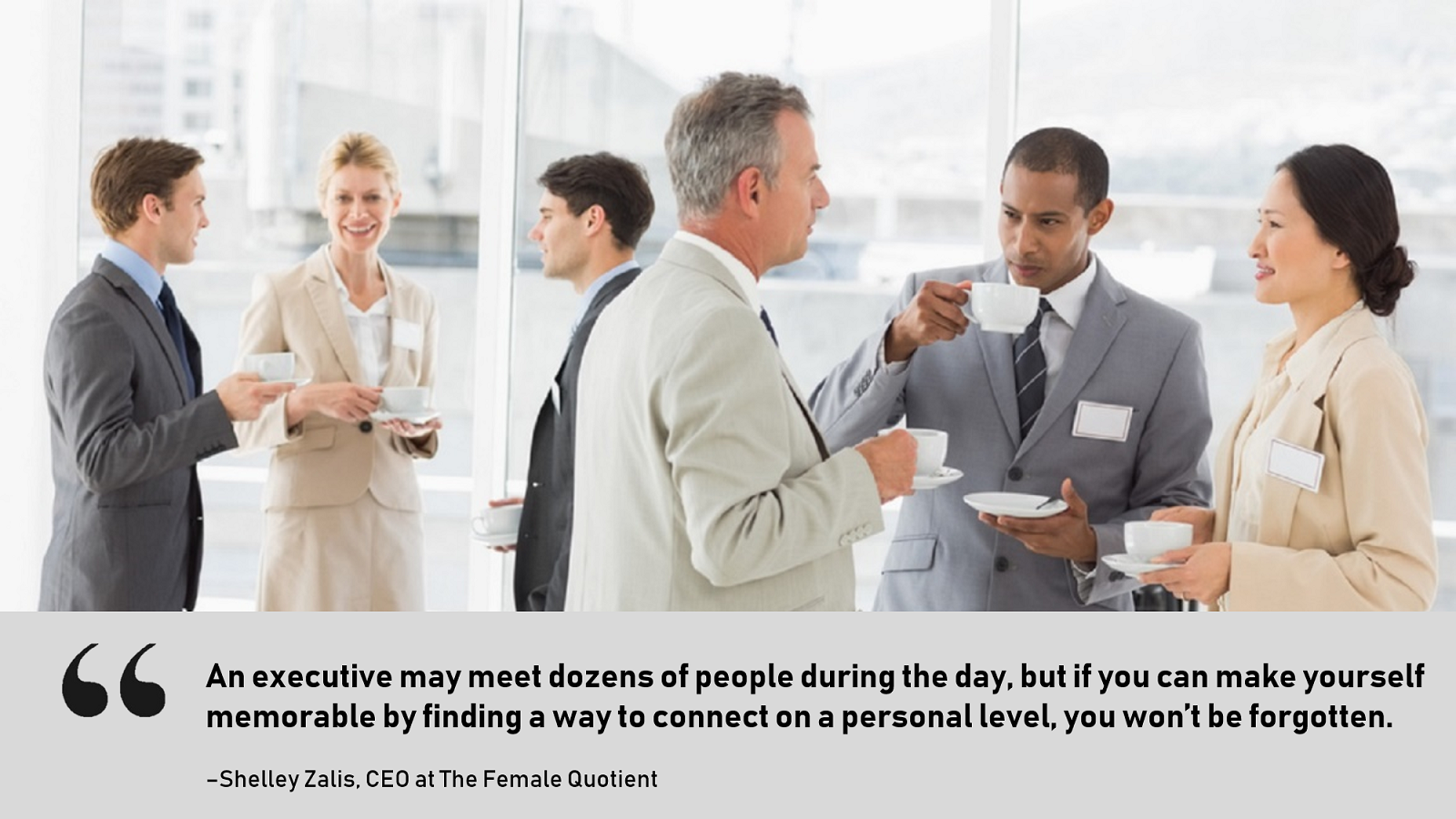
The best way to leave a lasting impression on someone is to come to the meeting ready to share something of value with them. Remember that networking is all about giving.
During a meeting, ask questions that dive deeper into their goals and challenges. Listen well, take notes and paraphrase back what you heard them say. Be ready to give advice, and offer to connect them with other resources and people.
“You should always be aware of which of your connections could be interested in meeting each other,” advises Jon Levy.
Following the meeting, do what you say you would do. Send an email thanking them and recapping the main points of the meeting along with any resources you offered to share.
Make introductions on behalf of your new contact to others in your network. Note that it’s best to practice an opt-in format before sharing people’s contact information. Call or email the person(s) you’d like to connect your new contact with to ask permission first.
By following these practices at the beginning of a new relationship, you are setting yourself up for more meetings in the future.
A final thought
Now that you’ve initiated a relationship with a new contact, the door is open to nurture the relationship. Your spirit of giving and helping others in your network will leave an impression that you’re someone worth knowing and doing business with.

Go forth, and build a network of life-long relationships.
You May Also Like:
 The Ultimate Guide to Buying Wholesale Solar Equipment
The Ultimate Guide to Buying Wholesale Solar Equipment
 Top 5 Tips to Maximize Your Solar Event Investment
Top 5 Tips to Maximize Your Solar Event Investment

 The Ultimate Guide to Selling Wholesale Solar Equipment
The Ultimate Guide to Selling Wholesale Solar Equipment